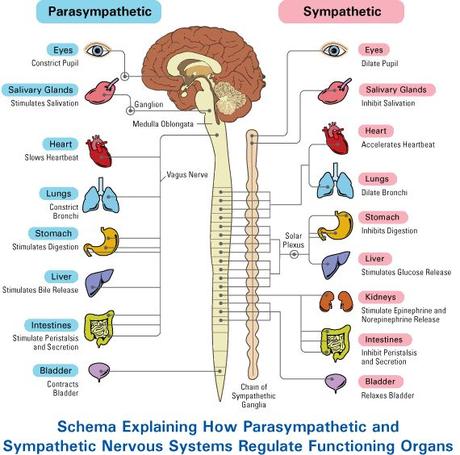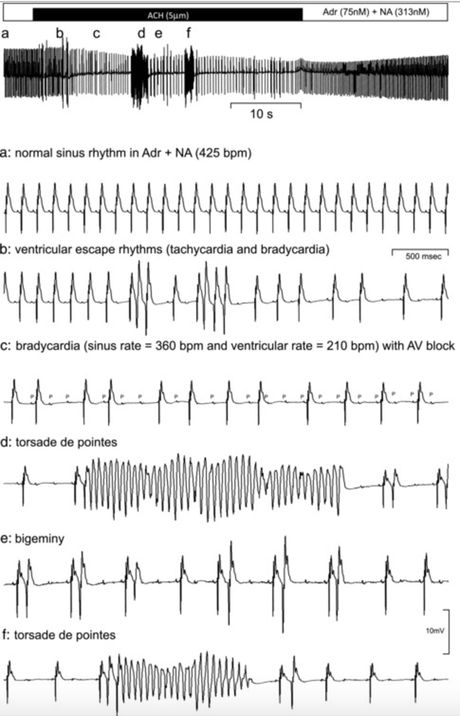
The strong and simultaneous activation of both branches the autonomic nervous system, sympathetic and parasympathetic, is known as ‘autonomic conflict.’ In the cartoonish intro-biology view of the body, the sympathetic system fight or flight is an accelerator, the parasympathetic is pumping the breaks. (I always used to think parasympathetic = paramedics = ’rest and recover’.)
So you might think, that these effects would just cancel each other out, but slamming on the accelerator and breaks in the car at the same time, isn’t the same as letting your car cruise.
The specific effects of activating the sympathetic and parasympathetic nervous systems depend on the tissue, and the why is really gonna come down to the details, but let’s look at a couple examples first.
- Blood vessels are going to constrict. Because most blood vessels in the body receive sympathetic but not parasympathetic innervation. They’ve got an accelerator but no breaks.
- The heart. Alone, the sympathetic nervous system makes the heart beat faster and stronger. The parasympathetic nervous system while slow it’s rate and slightly decrease the strength of it’s contractions. But if you have high levels of both, things can get tricky: Paton et al. (2005) shows this can cause generate cardiac arrhythmias which have even rarely lead to sudden death in animals. This can also be studied in isolated hearts, shown in this figure:

a. Shows an isolated heart receiving adrenergic neurotransmitters. B-F different strange patterns of activity (arrhythmias) observed after adding parasympathetic neurotransmitters on top of sympathetic. From Shattock and Tipton, 2012.
Why is this? We have to look at what the sympathetic and parasympathetic nervous system are doing mechanistically. The parasympathetic post-ganglionic neurons (that are signaling to effector tissues) release acetylcholine. That acetylcholine can signal nicotinic and change ion concentrations, or stimulate muscarinic receptors and set of G-couple protein receptor cascades. Meanwhile, sympathetic is mostly adrenergic, though some tissues such as sweat glands are also activated using acetylcholine.
How those neurotransmitters affect the effector tissues on the specific receptors are on the effector tissues, and how the downstream pathways of those receptors interact. And because receptors activation is influenced by the concentration of neurotransmitter, ‘low equal’ levels of sympathetic and parasympathetic activation may not be the same as ‘high levels’ of parasympathetic activation.
This autonomic conflict occurs physiologically for example when you jump into cold water, which can activate both the ‘cold shock response’ and the ‘diving response’. An interesting article I found explores whether or not this response can generate the above-mentioned arrhythmias in people and may cause sudden cardiac arrest and death in vulnerable individuals (and which may be the true cause of deaths which are currently labeled as deaths due drowning or hypothermia).
Advertisements
